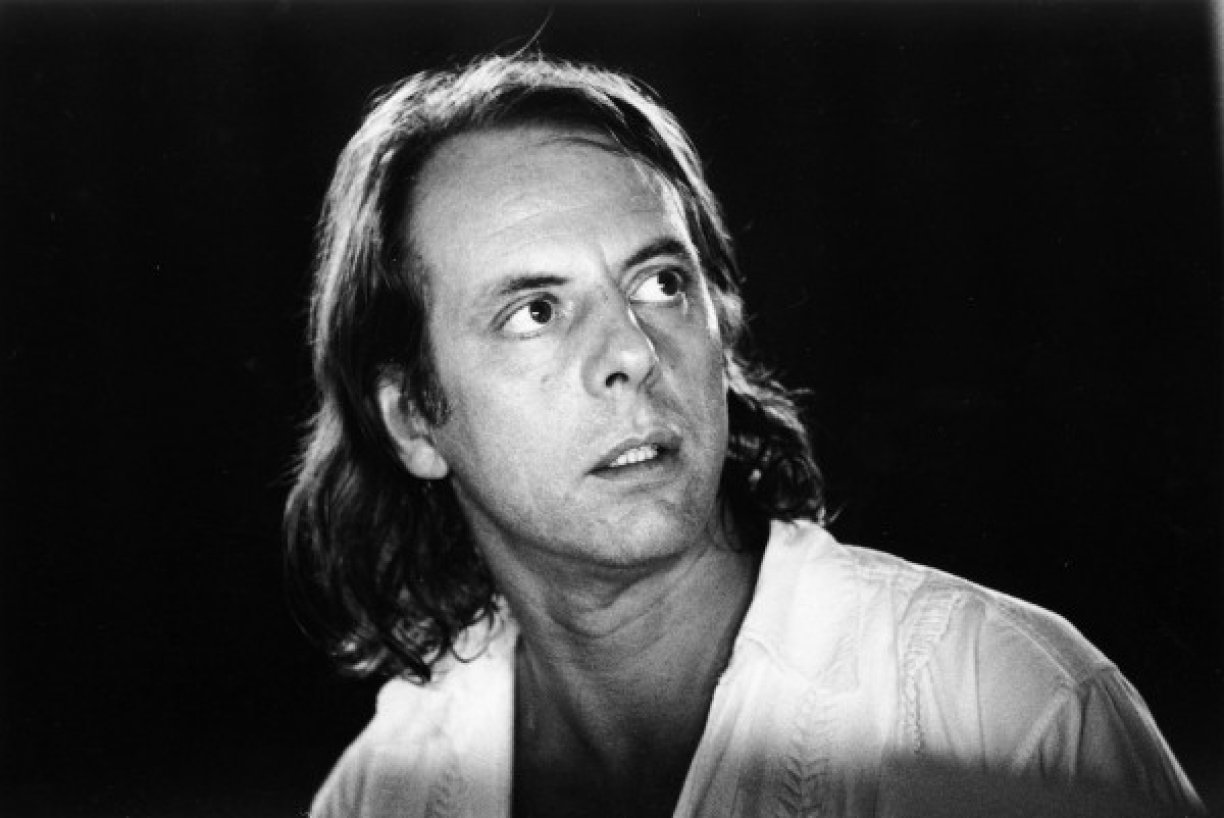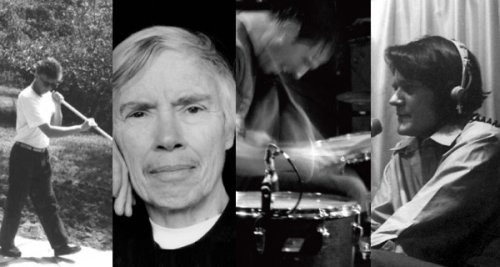Zach Layton: Does the 2012 Darmstadt Institute have a theme, given that this is the first year we’re presenting at 110 Livingston?
Nick Hallett: Yes. Filling the void. Creating something that wasn’t there before. Entering a new space.
ZL: The first event that we thought about presenting in terms of entering ISSUE’s new space was the String Orchestra of Brooklyn performing works of John Cage. It’s the centennial of Cage’s birth this year, and due to the reverberant character of 110 Livingston, we focused specifically on the later works such as the number pieces and “Hymns and Variations” for amplified voices.
NH: Those pieces are rarely performed. Perhaps then, reverberation is this year’s theme.
ZL: Or resonance.
NH: Speaking of, let’s talk about Gordon Mumma. I’ve been dying to present his work for years. His music is at the root of so much of the contemporary electronic sound; his work with feedback is totally pioneering. For this concert, Mumma has selected a few of his pure electronic pieces to complement his acoustic works, performed by Conrad Harris and Jenny Lin, both amazing musicians. I’ve been researching Milton Cohen’s Space Theater, which Mumma scored with Robert Ashley in the late 1950s. It was a precursor to the ONCE festivals, an immersive multimedia experiment like VanDerBeek’s Movie-Drome and the Experiments in Art and Technology. Anyway, I love these moments when composers whose innovations we take for granted today were just starting out, when they were trying to create something that didn’t yet exist, to fill the void. The idea of Mumma’s soundscapes bouncing around ISSUE’s walls gives me the goosebumps. I’m similarly thrilled that Gamelan Son of Lion accepted our invitation to perform. Just think about the sound of Gamelan at ISSUE.
ZL: The gongs and bells in the Gamelan ensemble will sound amazing, but the idea here is not traditional Gamelan music.
NH: Gamelan Son Of Lion co-founder Barbara Benary and her colleagues were trying to unite the soundworld of the Gamelan with the then-prevalent minimalist techniques filling downtown NYC’s void during the early 70s.
ZL: Not unlike the influence that Indonesian music had on Debussy and other French composers in the 1890s.
NH: Nice comparison. The Braid Pieces are Benary’s earliest forays into this comingling of worlds and so we’ve anchored the concert on this work. Benary’s studies at Wesleyan, where they have equally impressive composition and ethnomusicology departments had something to do with it, I’m sure.
ZL: That’s the same school where Matthew Welch studied. He has been a big part of our Darmstadt festivals in the past.
NH: I just experienced his Borges opera. Actually think there is a connection between the work of Benary and Matt Welch! He works within her inheritance, as I like to say.
ZL: This year’s Institute also includes newly commissioned works in collaboration with Turbulence and made possible
through NYSCA support—one featuring the sonic sculpture work of Eli Keszler at Eyebeam, and one with Chris Mann, a pioneer in the field of compositional linguistics. I’ve always found his work mesmerizing and sublime, and somehow inscrutable. His take on the rhythm of speech is truly unique.
NH: Along with Robert Ashley and Laurie Anderson, he is one of the great living composers working with text as a sound event or musical medium.
ZL: Mann’s approach is different than Ashley’s use of the American vernacular or Laurie Anderson’s style of storytelling. It’s as if Wittgenstein were to give a lecture with the fast forward button pressed…in Australia. I thought, wouldn’t it be interesting to see Chris’s work, which normally is performed solo, in an ensemble context, to see what kind of rhythms emerge from the interplay of his text/speech style with the instruments?
NH: Well, this is what artists do to take their ideas to Gesamtkunstwerk level, I’m glad Chris’s work is being put in the hands of Either/Or. I also think it will be an interesting match with Object Collection.
ZL: Yes. What is Object Collection planning for the night?
NH: A cycle of shorter pieces called “New York Girls.” Their work is so multi-layered and perplexing. It exists on the shared periphery of complex scoring procedures and out-there performance. Let’s talk about Kid Millions and his Man Forever project. We gave him his own night this year after presenting his music on shared bills over the past two. It will be his first composer portrait. There will be works for voice and guitar ensembles, plus a collaboration with artist-choreographer Dana Bell.
ZL: Knowing his music, I think it will sound very reflective at 110 Livingston. The rhythmic intensity of Man Forever tends to have a very rolling, oceanic quality which, I believe, will ultimately enhance the natural overtones produced by the drums and cymbals.
NH: I think people are going to be surprised here. Kid is enormously versatile. And Rhys Chatham will be at ISSUE the next night for Spy Music Festival.
ZL: and so will Kid! He’ll be playing drums on Rhys’s Guitar Trio. When we discuss the ideas of natural resonance and reverberance, who better to celebrate than Pauline Oliveros? This year is her 80th birthday and she recently won the John Cage award given by the Foundation for Contemporary Arts. We’ve assembled an all-star group of Pauline’s collaborators to perform a selection of her works, including Miguel Frasconi, Suzanne Thorpe, Fast Forward, and also the Swiss pianist Anmari Wili.
She’ll be performing a great trio called Tree Peace with Alex Waterman on cello and Jason Hwang on violin. Anmari proposed this concert, after organizing a wide selection of works celebrating Pauline in Switzerland. After some discussion, it became clear that a great way to make something like that happen here in New York would be to invite a number of Pauline’s collaborators to participate in a birthday celebration. So, although Pauline will herself be involved, this will also give her an opportunity to sit back and enjoy the sound of her own music interpreted by her friends and collaborators.
NH: A tribute to befit the legend.


